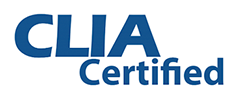
The fallopian tubes are part of a woman’s reproductive system and connect the ovaries with the uterus. Each month, typically mid-cycle, one of your ovaries releases an egg during ovulation. The egg travels through the fallopian tube and into the uterus. If fertilization doesn’t occur then the egg sheds along with the lining of the uterus during your period.
If fertilization does occur, it takes place in the fallopian tube. If all goes right the fertilized egg moves through the tube into the uterus where it implants and grows over the next 40 weeks.
A normal reproductive system has a set of two fallopian tubes, one for each ovary. If there is a blockage in either fallopian tube then the sperm may not get to the egg for fertilization. Another complication of a blocked fallopian tube occurs when the sperm reaches the egg and fertilize it only to have the path to the uterus blocked. The egg may then implant in the tube and begin to grow in what’s known as an ectopic pregnancy. This is not a viable pregnancy and can be life-threatening for a woman.
Between 20% and 30% of women diagnosed with infertility have damaged or blocked fallopian tubes. The condition, known as tubal occlusion, tubal disease or tubal infertility, compromises fertility. If the blockage occurs in only one tube and the other remains healthy and intact pregnancy is still possible, but if blockages occur in both tubes you will need a procedure and very likely fertility treatment to conceive.
What Causes Blocked Fallopian Tubes?
Fallopian tubes are quite small and fairly delicate. There are plenty of opportunities for damage and blocking of these little ovulation highways. The most likely causes are disease, surgery and infection in the pelvic region. Here are some of the most common causes of blocked fallopian tubes.
- Endometriosis: When endometrial-like tissue grows outside of the uterus, it attaches to other organs. Hormonal triggers that cause the uterine endometrial tissue to shed also trigger changes in the endometriosis which causes inflammation. The inflammation leads to scarring. Scarring on the fallopian tubes causes blockages.
- Pelvic Inflammatory Disease (PID): PID is a chronic infection which develops when an STD or other infection goes untreated. When the infection is near the fallopian tubes development of scar tissue leads to blockages.
- Ectopic Pregnancy: An ectopic pregnancy is life-threatening as the tube is too small and fragile to support a fertilized egg as it grows and develops and frequently causes a ruptured fallopian tube. In some cases your doctor finds the ectopic pregnancy and removes the fertilized egg before it can rupture your tubes. However, the surgery may lead to scarring or, if the tube is badly damaged, removal.
- Past Surgeries: If you’ve had any surgeries in your abdominal region, such as uterine fibroid removal or surgery for endometriosis scarring of the fallopian tubes can occur. The scar tissue prevents movement through the tubes.
- Tubal Ligation: This procedure, commonly known as “having your tubes tied” is an elective surgery to prevent pregnancy. Sometimes you may opt to reverse your tubal ligation. Depending on certain factors it may be possible but requires surgery.
Symptoms of Blocked Fallopian Tubes
There really are no symptoms of blocked fallopian tubes, however the conditions that often cause blockages do have symptoms. For example painful periods, pain during intercourse and heavy bleeding may indicate endometriosis or PID. If you develop hydrosalpinx, a condition common with PID, when the blocked fallopian tube fills with fluid, you may experience pain and an unusual vaginal discharge. Otherwise, the inability to conceive is the first symptom most people experience.
Diagnosis of Blocked Fallopian Tubes
Hysterosalpingography is the name of the test to determine fallopian blockages is. Your doctor introduces dye into your fallopian tubes and uterus. An x-ray then helps your doctor determine if there is a blockage. If your doctor isn’t able to determine a blockage via hysterosalpingography, they use a laparoscopy for additional evaluation. Sometimes your doctor is able to remove the blockage during the laparoscopy.
What Is the Treatment?
In the case of hydrosalpinx it’s essential to future pregnancies to remove the fluid. This fluid contains dead cells and toxins which may leak into the uterus and prevent implantation. Doctors prefer treating hydrosalpinx using the procedure known as a salpingectomy. This laparoscopic procedure involves removal of the diseased tissue preventing the fluid from interfering with a successful pregnancy. Although the removal of the tissue means natural conception is impossible it was not possible with the diseased fallopian tube(s) anyway. Now successful pregnancy via IVF is possible.
Tubal cannulation is another successful treatment that’s most successful for minor blockages. The doctor inserts a cannula through the vagina and into the sliced tube. Using ultrasound, the doctor locates the blockage and using either an inflated balloon or a surgical wire, removes it.
Treatment for reversing a tubal ligation depends on the type of ligation in place. Reattachment of surgically cut tubes is sometimes possible, however, there could be scar tissue which causes a blockage after recovery. In some tubal ligation doctors use rings or clips to block the path to fertilization. In these cases there is a higher degree of success but, as it is abdominal surgery, blockages may form from scar tissue. Should you want to become pregnant after tubal ligation you’ll likely find greater success through IVF.
For More Information
If you are trying to conceive without success, you may have blocked fallopian tubes. Contact LA IVF for more information on diagnosis and treatment.









